| Listing 1 - 10 of 20 | << page >> |
Sort by
|
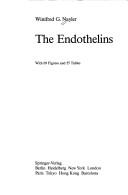
ISBN: 0387528563 3540528563 Year: 1990 Publisher: Berlin Springer
Abstract | Keywords | Export | Availability | Bookmark
 Loading...
Loading...Choose an application
- Reference Manager
- EndNote
- RefWorks (Direct export to RefWorks)
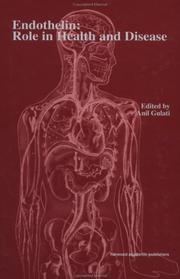
ISBN: 3718656310 Year: 1995 Publisher: Australia ; United States : Harwood Academic Publishers,
Abstract | Keywords | Export | Availability | Bookmark
 Loading...
Loading...Choose an application
- Reference Manager
- EndNote
- RefWorks (Direct export to RefWorks)
Endothelins. --- Endothelins --- Pathophysiology. --- Physiological effect.
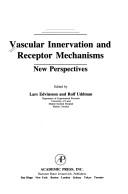
ISBN: 0122323505 Year: 1993 Publisher: San Diego ; New York ; London Academic Press
Abstract | Keywords | Export | Availability | Bookmark
 Loading...
Loading...Choose an application
- Reference Manager
- EndNote
- RefWorks (Direct export to RefWorks)
Chemoreceptors --- Neuropeptides --- Endothelins
Book
Year: 2000 Publisher: Bruxelles: UCL,
Abstract | Keywords | Export | Availability | Bookmark
 Loading...
Loading...Choose an application
- Reference Manager
- EndNote
- RefWorks (Direct export to RefWorks)
Endothelin-1 (ET-1), discovery in 1988 by Yanagasawa and colleagues, is a potent mitogenic and vasoconstrictor peptide whose plasmatic level is elevated in the failing heart. It modulates the rennin-angiotensin-aldosterone (RAA) system, influences salt and water homeostasis and increases sympathetic activity. Through its vasoconstrictor action, ET-1 is important in the maintenance of vascular tone and blood pressure.
The mRNA of preproET-1 is present in the healthy heart and lungs but is significantly overexpressed in a lot of experimental cardiac failure models.
Bonding of angiotensin II (Ang II) to AT1 receptor of cardiac fibroblasts promotes their growth and the production of ET-1 and transforming growth factor-β1 (TGF-β1). These growth factors, released by fibroblasts, stimulate cardiac myocyte hypertrophy via a paracrine mechanism
These trophic effects Ang II –induced are totally inhibited by selective AT1 receptor antagonists but not by AT2 receptor antagonists indicating that theu are mediated bu the AT1 receptor only.
We compared ET-1 gene expression in cultured neonatal rat cardiac fibroblasts stimulate or not by angiotensin II and investigated the effects of losartan (a selective AT2 receptor antagonist), lacipidine (a calcium channel blocker) and probucol and α-tocopherol (antioxidants).
Reverse transcription-polymerase chain reaction (RT-PCR) was used because of its high sensitivity (a few nanograms of total RNA is enough). Weakly expressed mRNAs, like preproET-1 mRNA, may thus be quantified by this method.
We also investigated the effect of angiotensin II on calcium signal in cultured neonatal rat cardiac fibroblasts using FURA-2AM
Moreover, cardiac fibroblasts were identified by double labeling with antibodies to be sure that culture were not cardiac myocytes L’endothéline-1 (ET-1), découverte en 1988 par Yanagisawa et al, est un peptide aux propriétés mitogènes et vasoconstrictrices puissantes dont le taux plasmatique s’élève dans l’insuffisance cardiaque. Outre son influence sur le système rénine-angiotensine-aldostérone (RAA), elle module le système nerveux sympathique ainsi que l’homéostasie hydroélectrique. Par son action vasoconstrictrice, elle permet d’augmenter la pression sanguine.
L’ARNm de la préproendothéline-1 (ppET-1) est présent au niveau du cœur et des poumons normaux mais son expression est significativement augmentée dans de nombreux modèles expérimentaux d’insuffisance cardiaque.
La liaison de l’angiotensine II (Ang II) au récepteur AT1 des fibroblastes cardiaques induit leur croissance et augmente la synthèse d’endothéline-1 et de transforming growth factor β1 (TGF-β1). Ces deux facteurs libérés par les fibroblastes provoquent l’hypertrophie des cardiomyocytes de manière paracrine. Ces effets trophiques Ang II-induits peuvent être complètement inhibés par des antagonistes sélectifs de récepteur AT1 de l’angiotensine. Ceci confirme l’implication du récepteur AT1 dans cette réponse à l’angiotensine II et exclut celle du récepteur AT2.
Nous avons comparé le niveau d’expression du gène de l’endothéline-1 au niveau des fibroblastes cardiaques de rats nouveau-nés maintenus en culture, stimulés ou non par l’angiotensine II et testé l’effet d’an antagoniste de l’angiotensine II, le losartan ; d’un antagoniste calcique, la lacidipine ainsi que d’antioxydants.
c’est la technique de la reverse transcription-polymerase chain reaction (RT-PCR) qui a été choisie pour quantifie le niveau d’expression des peptides étudiés car elle est extrêmement sensible (quelques nanogrammes d’ARN total suffisent). Par cette méthode, on peut donc étudier l’expression de gènes dont les ARN messagers sont présents en très faible quantité, ce qui est le cas de celui codant pour l’endothéline.
Parallèlement, nous avons étudié l’influence de l’angiotensine II sur le signal calcium dans les fibroblastes cardiaques par la méthode FURA-2AM.
De plus, une technique de marquage par double anticorps a permis de s’assurer que les cellules maintenues en culture étaient des fibroblastes.
Fibroblasts --- Endothelins --- Angiotensin-2 --- Heart Failure
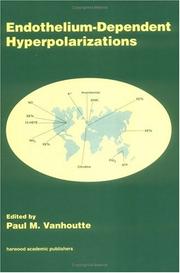
ISBN: 9057024926 Year: 1999 Publisher: Amsterdam Harwood Academic Publishers
Abstract | Keywords | Export | Availability | Bookmark
 Loading...
Loading...Choose an application
- Reference Manager
- EndNote
- RefWorks (Direct export to RefWorks)
Endothelins --- Endothelium, Vascular --- Muscle, Smooth, Vascular
Book
ISBN: 1281349992 9786611349998 3540329676 Year: 2006 Publisher: Berlin : Springer,
Abstract | Keywords | Export | Availability | Bookmark
 Loading...
Loading...Choose an application
- Reference Manager
- EndNote
- RefWorks (Direct export to RefWorks)
A comprehensive review of the advances in research on the vascular endothelium, this work discusses the structure, development and function of the normal vascular endothelium, considers conditions that lead to the disruption of vascular physiology and talks about specific pathologies and their treatment.
Vascular endothelium. --- Blood vessel endothelium --- Blood-vessels --- Endothelium, Vascular --- Endothelium --- Endothelins
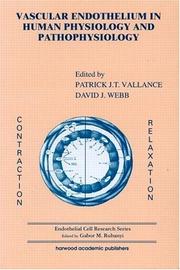
ISBN: 0429152922 1482283565 0203304950 1280073497 9786610073498 9780203304952 9789057024894 9057024896 9780429152924 9781482283563 9781280073496 661007349X Year: 2000 Publisher: Australia Canada Harwood Academic
Abstract | Keywords | Export | Availability | Bookmark
 Loading...
Loading...Choose an application
- Reference Manager
- EndNote
- RefWorks (Direct export to RefWorks)
Endothelial dysfunction is now regarded as an early marker of vascular disease and therefore an important target for therapeutic intervention and discovery of novel treatments. Ideal for both basic and clinical scientists, whether in industry or academia, and physicians, Vascular Endothelium in Human Physiology and Pathophysiology provides an up-to-date review of the vascular functions of the endothelium and its role in key areas of cardiovascular disease. It focuses on evidence from studies in humans.
Vascular endothelium. --- Vascular endothelium --- Blood vessel endothelium --- Blood-vessels --- Endothelium, Vascular --- Endothelium --- Endothelins --- Pathophysiology.
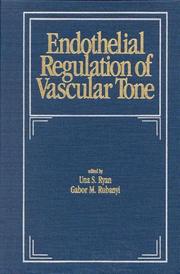
Abstract | Keywords | Export | Availability | Bookmark
 Loading...
Loading...Choose an application
- Reference Manager
- EndNote
- RefWorks (Direct export to RefWorks)
Endothelins --- Nitric oxide --- Vascular endothelium --- Vascular resistance --- Endothelium-Dependent Relaxing Factors --- Endothelium, Vascular --- Vasoconstriction --- physiology
Dissertation
ISBN: 9036710065 Year: 1998 Publisher: Groningen Rijksuniversiteit Groningen
Abstract | Keywords | Export | Availability | Bookmark
 Loading...
Loading...Choose an application
- Reference Manager
- EndNote
- RefWorks (Direct export to RefWorks)
Renin-Angiotensin System --- Endothelins --- Cardiomegaly --- Sympathetic Nervous System --- Heart --- physiology --- physiopathology --- innervation
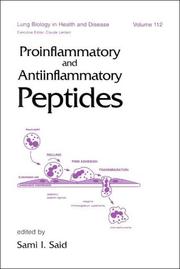
ISBN: 0824701208 Year: 1998 Publisher: New York, NY : Marcel Dekker,
Abstract | Keywords | Export | Availability | Bookmark
 Loading...
Loading...Choose an application
- Reference Manager
- EndNote
- RefWorks (Direct export to RefWorks)
INFLAMMATION MEDIATORS --- TISSUES --- CELLS --- SUBSTANCE P --- VASOACTIVE INTESTINAL PEPTIDE --- ENDOTHELINS --- ALPHA-MSH --- TACHYKININS --- PATHOLOGY
| Listing 1 - 10 of 20 | << page >> |
Sort by
|

 Search
Search Feedback
Feedback About UniCat
About UniCat  Help
Help News
News